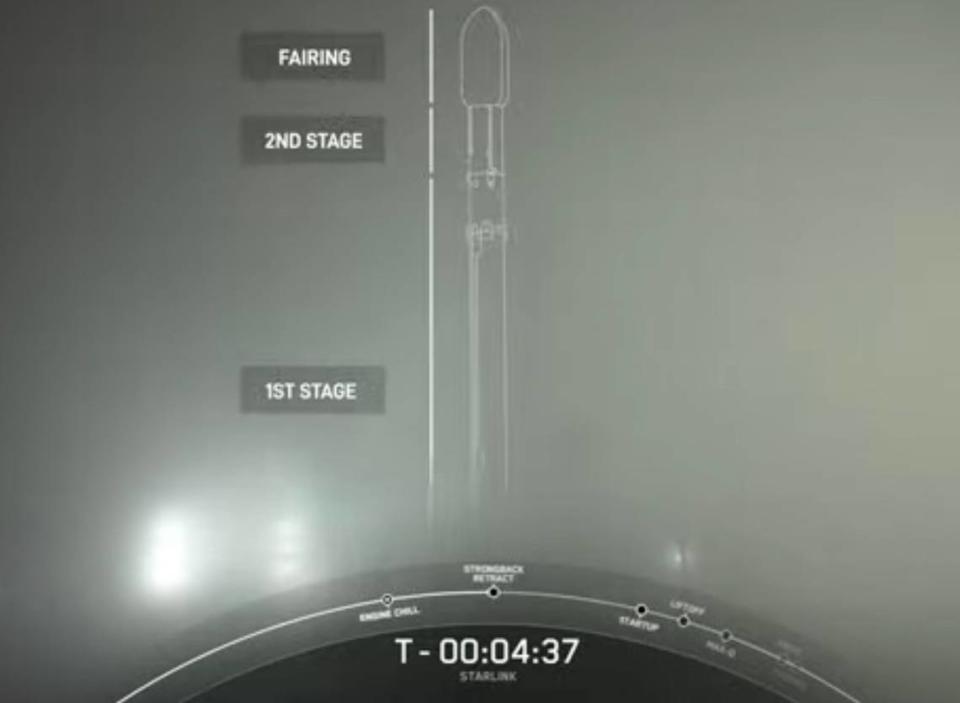Dense fog at Vandenberg spoils the view but not the launch of SpaceX Falcon rocket
Stubbornly dense fog spoiled the view for some watchers as 15 Starlink satellites stashed into the nose cone of a Falcon 9 rocket roared into space Wednesday night from Vandenberg Space Force Base.
Clear skies along the South Coast and Santa Ynez Valley provided spectators an opportunity to see the Falcon’s flight and spectacular stage separation after the 9:09 p.m. liftoff from Space Launch Complex-4 on the South Base.
However, the heavy fog entirely shrouded the rocket from a launch pad camera meant to capture the pre-launch milestones, so SpaceX comically added a sketch to show where the rocket allegedly stood.
“Just to help you visualize it, we’ve added an outline of the rocket to give you a better idea of what we’re supposed to be seeing at the pad,” Zachary Luppen, SpaceX engineer and the webcast commentator, said.

While spoiling the view for some would-be spectators, dense fog is not a weather condition that interferes with the Falcon rocket’s departure.
Wednesday’s liftoff occurred after a Tuesday launch attempt ended with an abort, later blamed on an alert from the rocket’s second stage. However, the team determined the rocket remained healthy and ready for a Wednesday night countdown.
Aboard the SpaceX rocket were the newest Starlink satellites, which deployed nearly 15 minutes after liftoff, the company confirmed.
Several minutes after launch and once it performed its job, the rocket’s first-stage booster touched down on a drone ship stationed in the Pacific Ocean several hundred miles away from Santa Barbara County.
Designed and built by SpaceX, Starlink is a space-based constellation with thousands of satellites to provide Internet access in remote areas where land-based access is unavailable or unreliable.
A mayor in the Philippines recently shared on Twitter how Starlink has benefited the Schools of Living Traditions for remote indigenous communities from Mindanao’s Blaan Tribe, allowing members to teach, preserve and share their culture and arts with the next generation.
“Guided by the oral stories and wonderful live performances of their tribal elders, our young people from these faraway Philippine indigenous communities can now, with Starlink connectivity, connect the rest of the world to the heart and soul of their rich cultural heritage,” City of Koronadal Mayor Eliordo “Bebot” Ogena said.
About 80% of the tribal community members are 12 to 20 years old, Ogena said.
“Our ambitious initiative in Koronadal City is to enable the aspirations of our young custodians of culture,” the mayor said, mentioning the United Nations organization focused on education, science, culture and more plus the nation’s commission to preserve culture and the arts.
The initiative aims to provide Starlink “to all 12 of our isolated indigenous communities” along with local districts and ultimately the entire Koronadal City, the mayor added.

